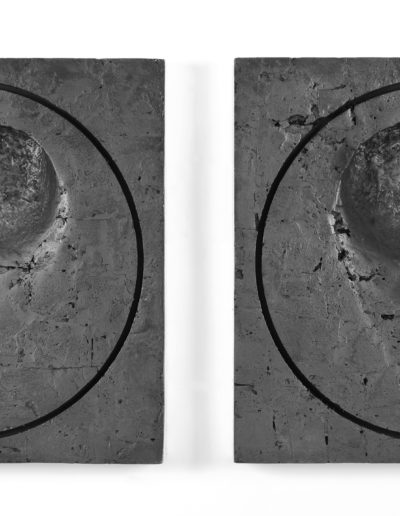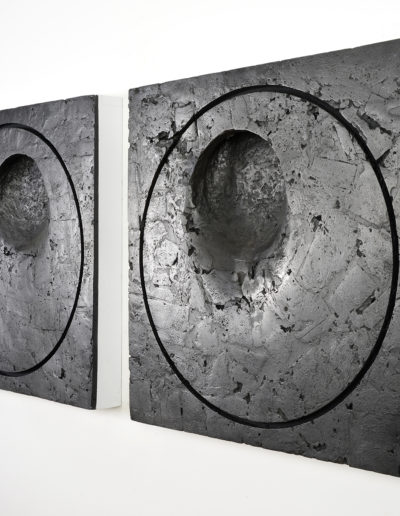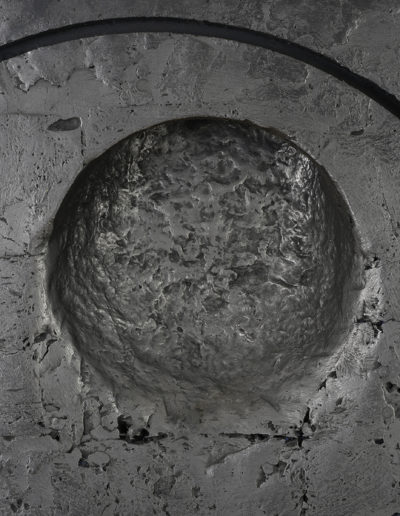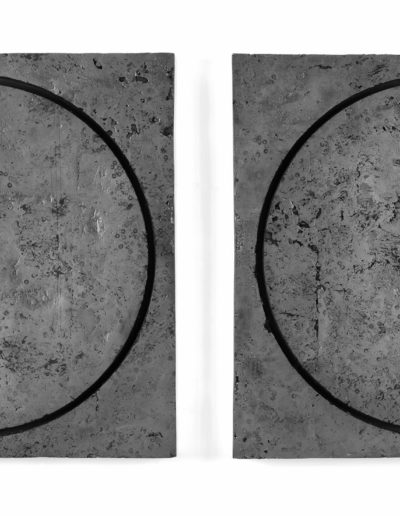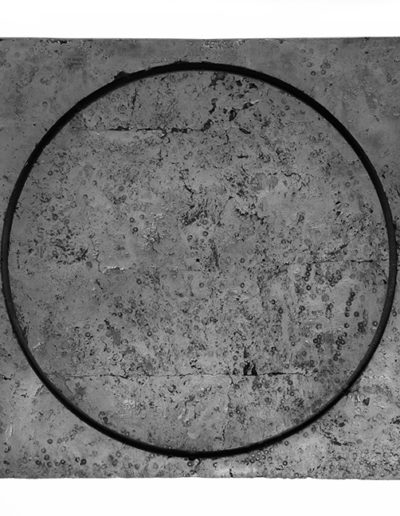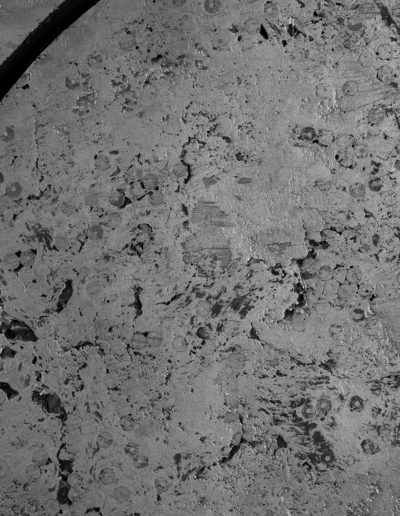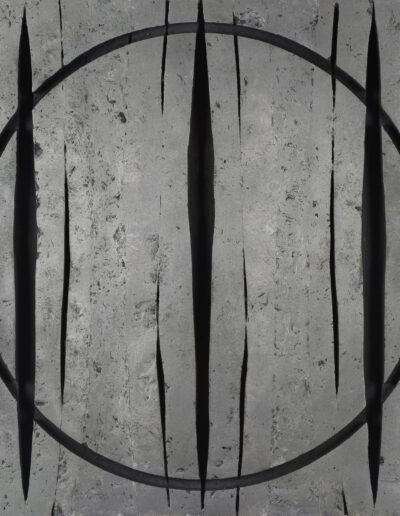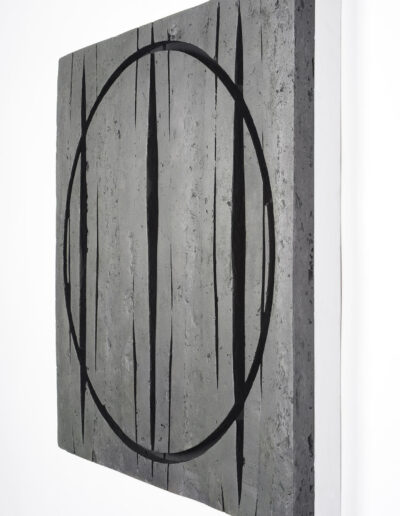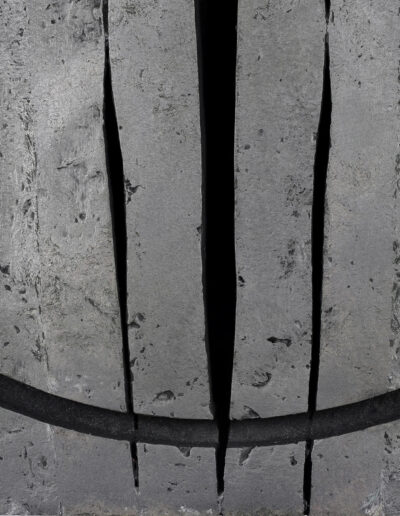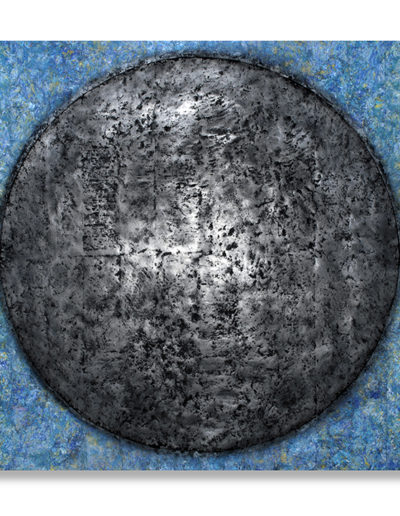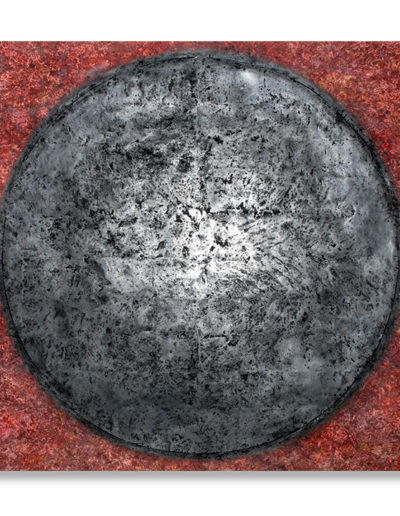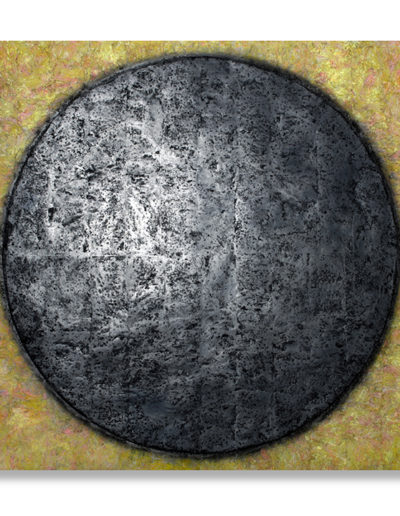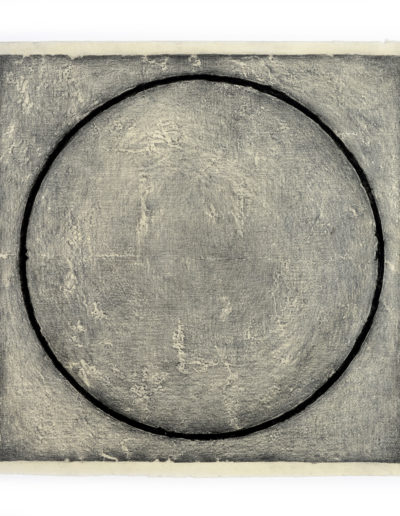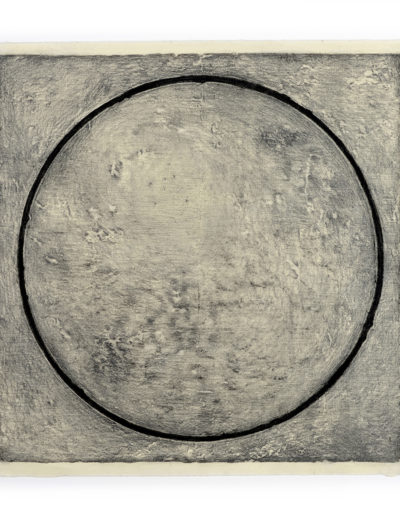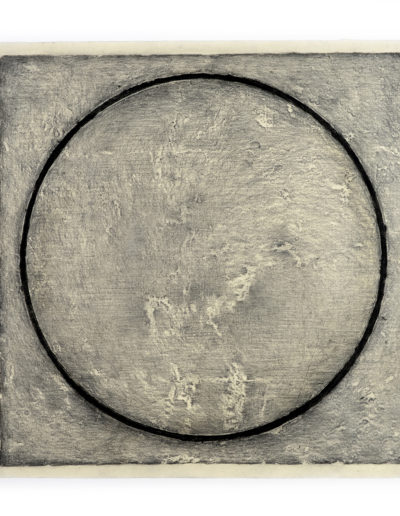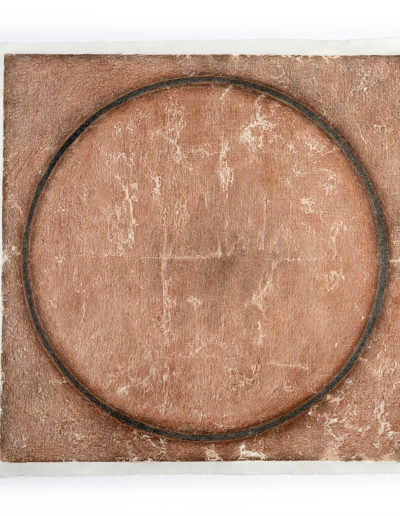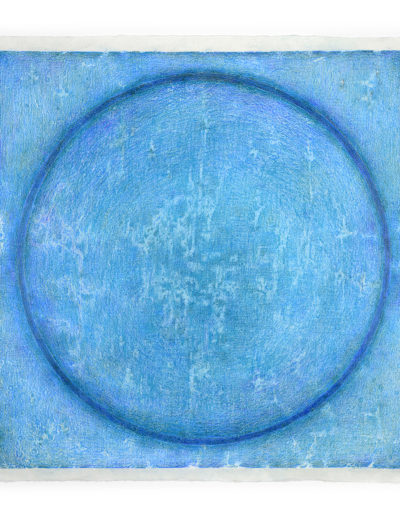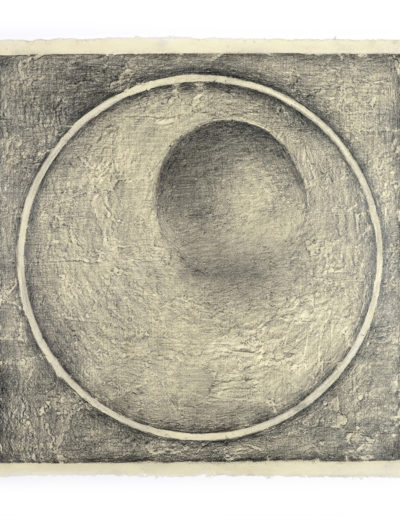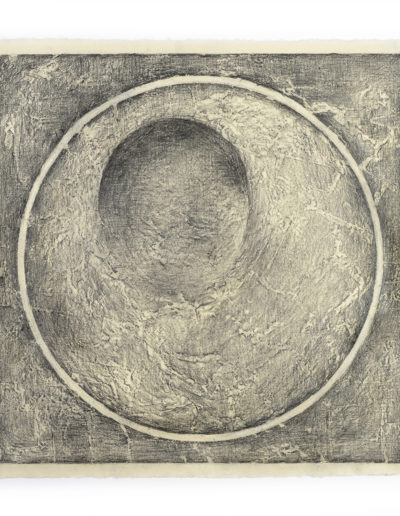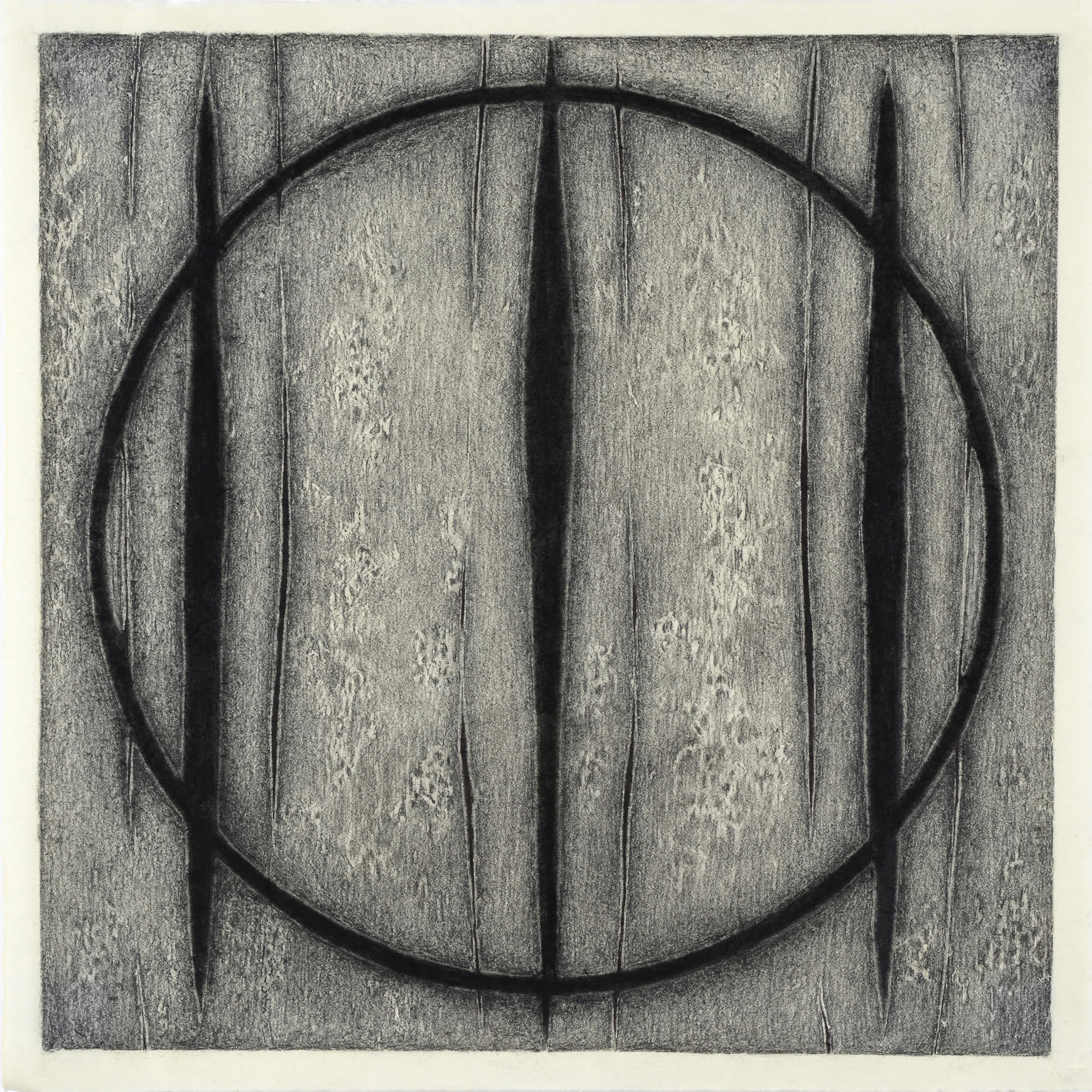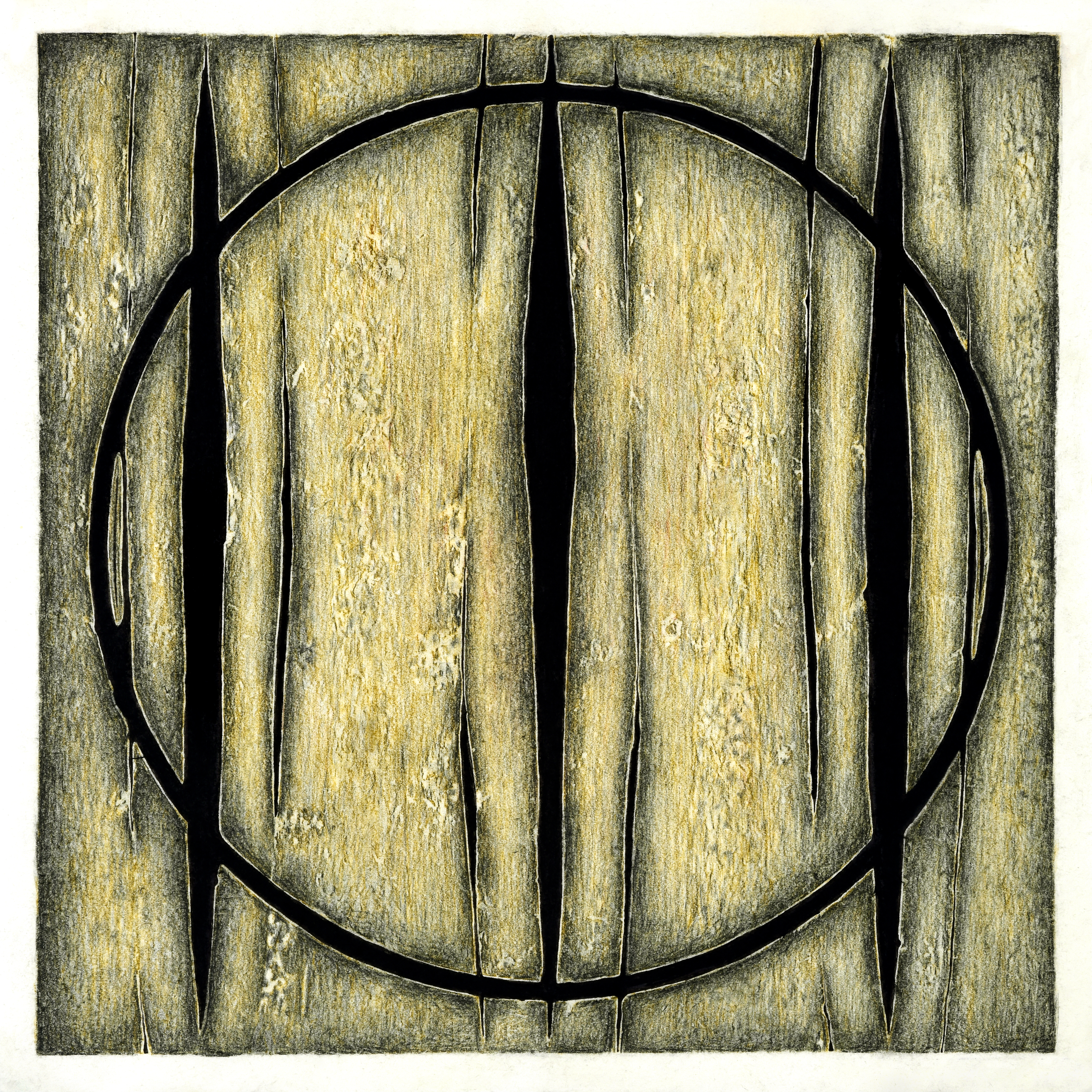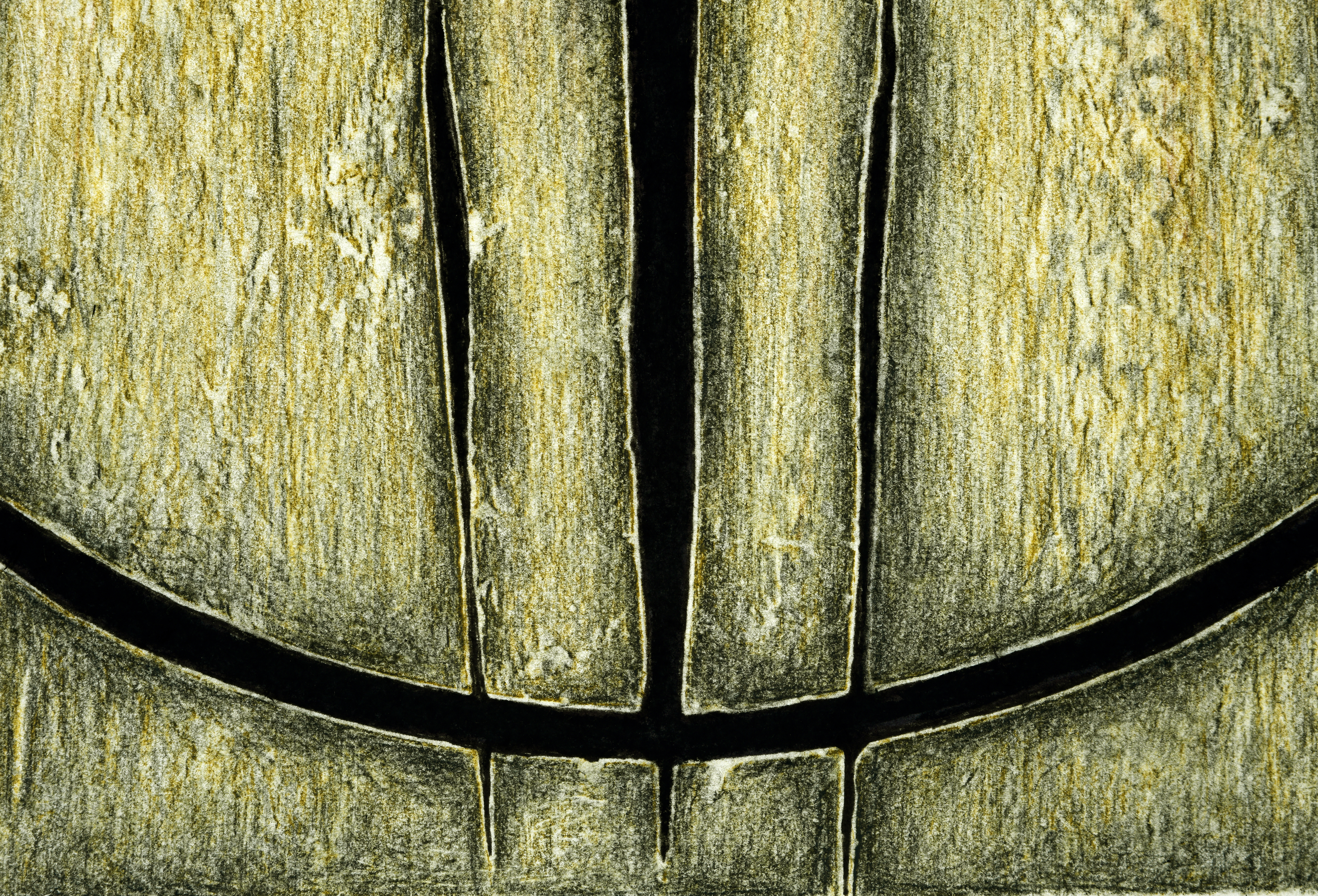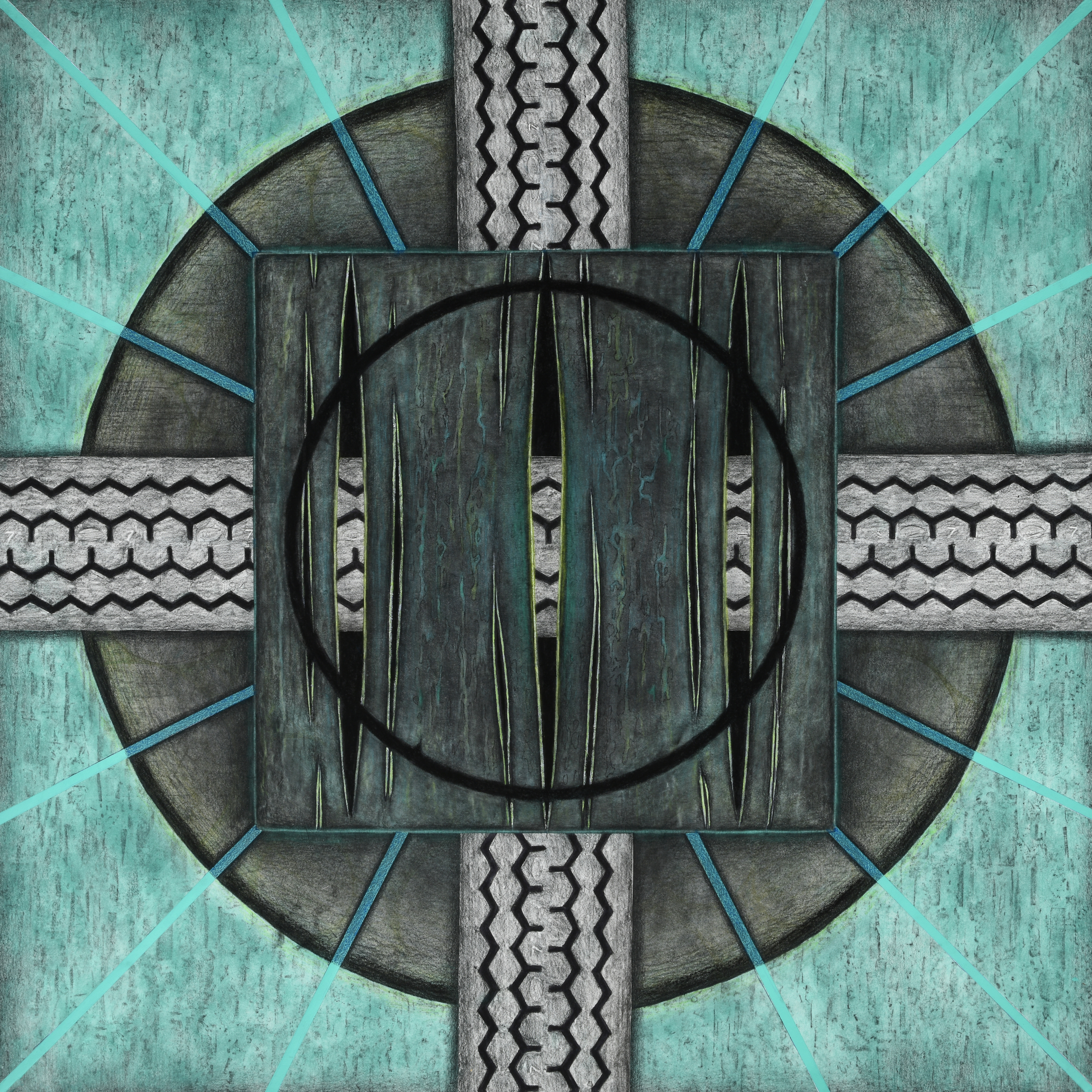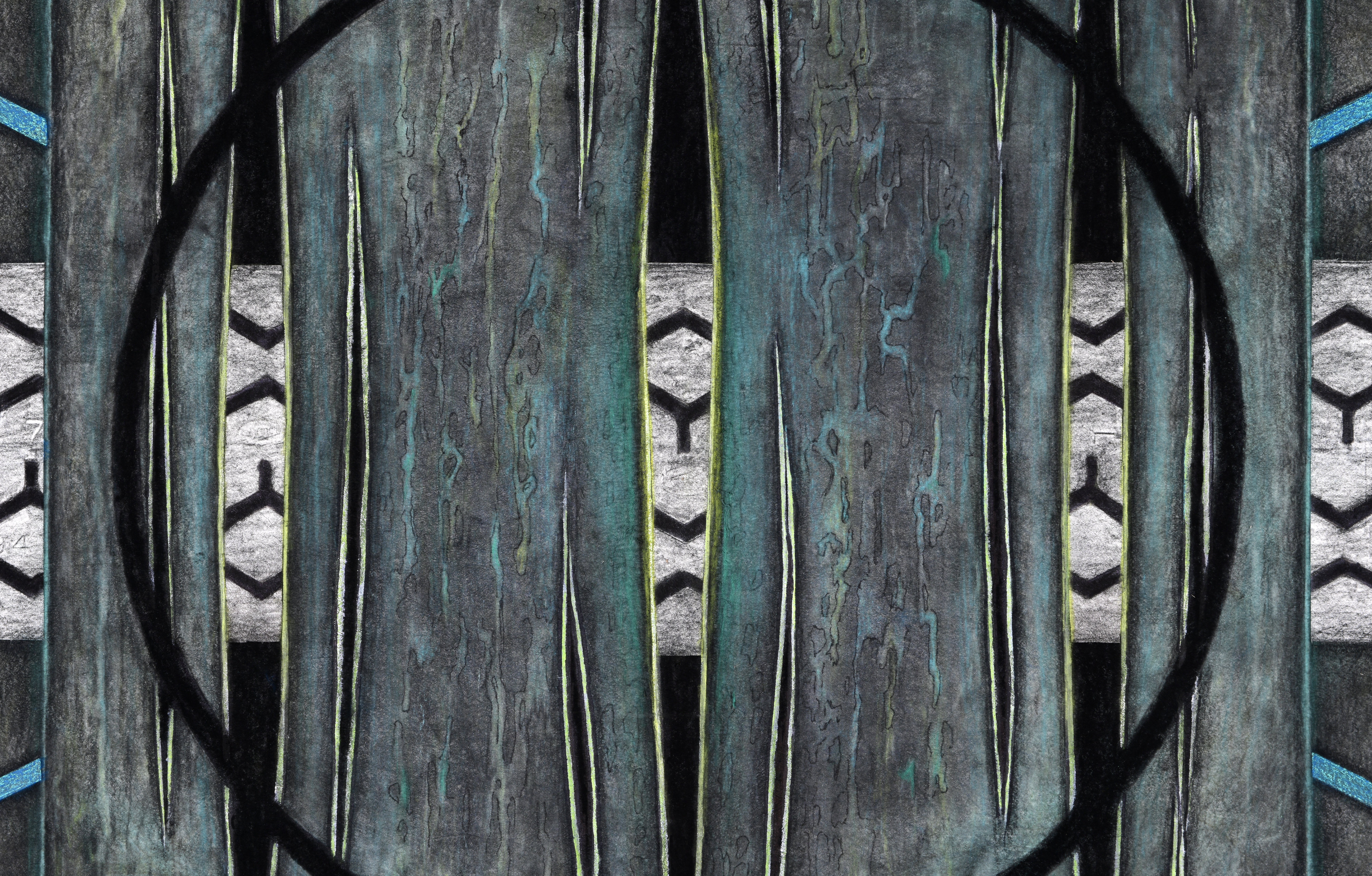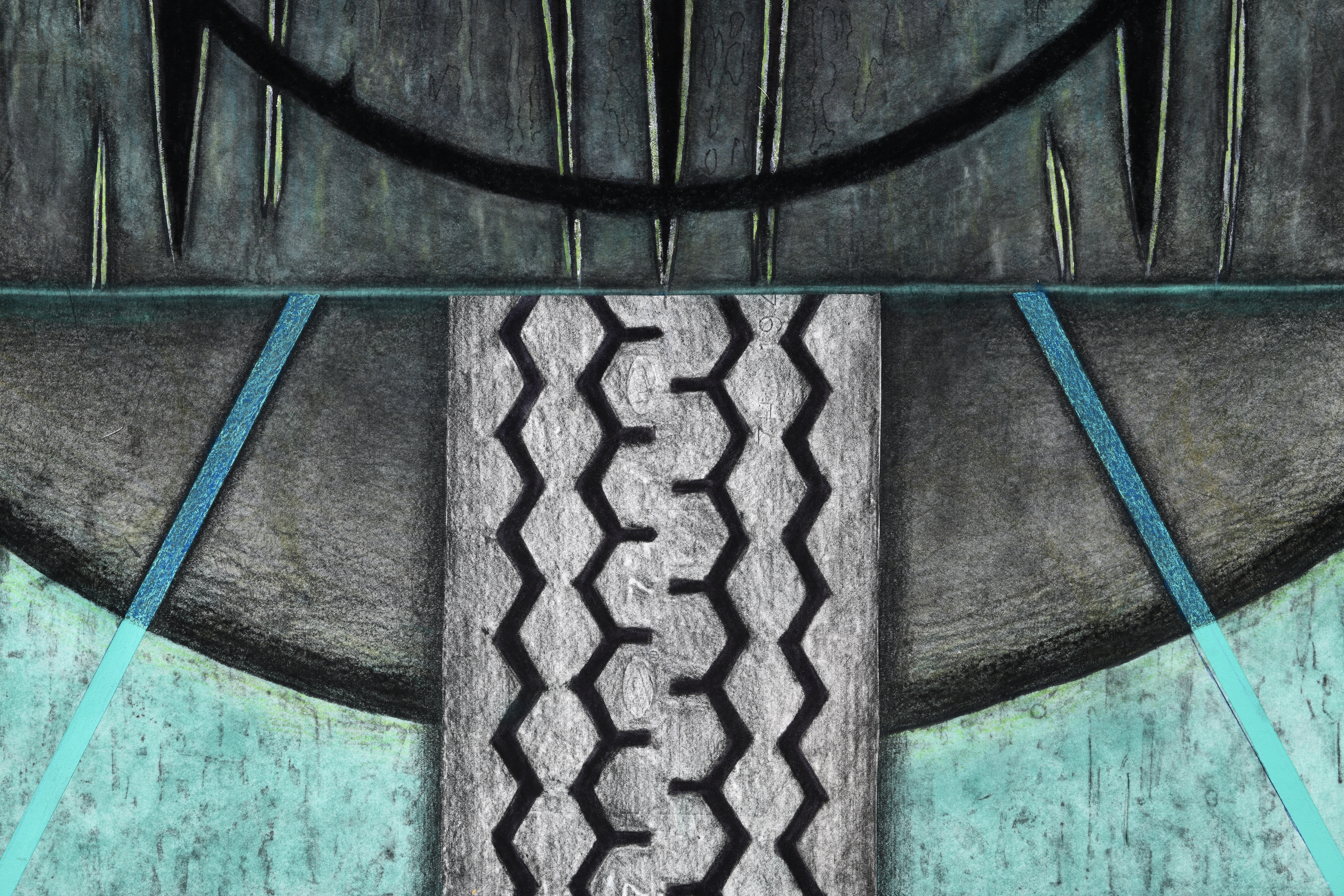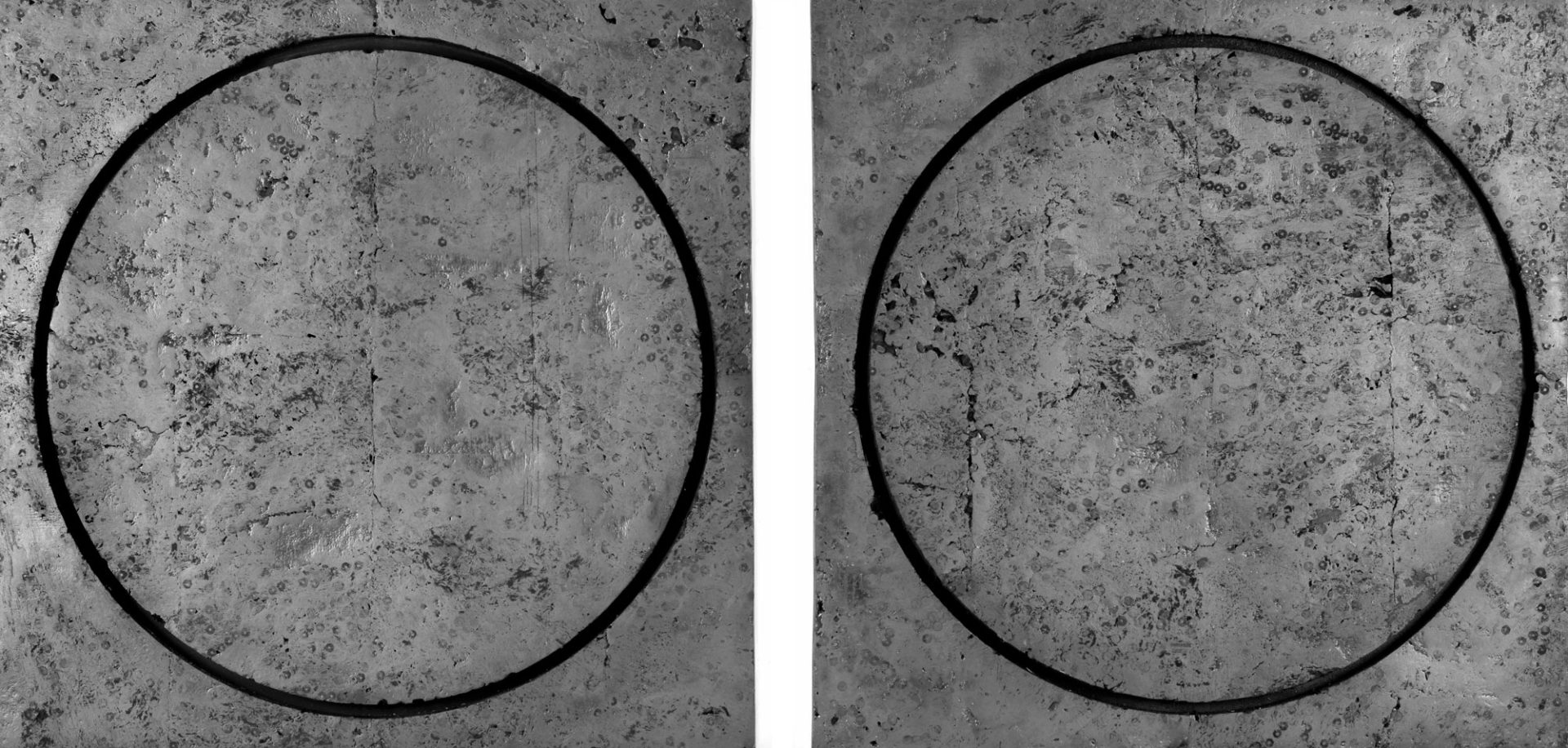
Graphite and Circle Drawings
I have long been a fan of the sculptors Gordon Matta Clark and Lee Bontecou. These artists both made severe and sometimes radical cuts into materials, going beyond the surface to the inner core of the matter in order to expose that core to the light of day, both formally and conceptually. They are an inspiration for artists such as myself who seek to continue the dialogue. My graphite sculptures reflect this preoccupation, though in a manner that is literal in a different way from some of my other work. Slicing into the guts of the matter is often how I attempt this excavation. In these pieces, by inscribing the sliced and compacted matter with a deep, routed-out circle, I am creating a literal core, something that might exist at the heart of a planet or as a comet whose surface has been burned off by the travails of space travel. Moving from the cosmic outer limits to the depths of inner space, in the Tears sculptures, the deep, dark, seemingly bottomless orifices compel the viewers, drawing them in and back out only to experience the raw surface from which the cuts were made.
The Graphite and Circle Drawing body of work emerged from the making of the original wall sculptures, Black Graphite Circle and Graphite Tears. These pieces, constructed of shredded paper, graphite and glue, are “drawings” with a thickness of 2.75 inches. The thickness may lead the viewer to consider that even drawings, which are often thought of as definitionally two-dimensional, are always, in truth, three-dimensional. These paper and pencil drawings do not lay there quiet and docile and flat, as one might expect were they simple sketches. The sheer magnitude of their presence is, in contrast, almost comic.
The rubbings taken from the original sculptures, Black Graphite Tear Drawing and the various Black Circle Drawings, highlight features of the originals, but this time in a form that more closely approximates a two-dimensional drawing. They follow the marks and traces of the band saw’s cut and testify to the sometimes rough and raw treatment of the original piece. The rubbings lift the original fissures of the original piece and with further manipulation, these progeny become their own artistic statements that, when understood in light of their origins, remind the viewer that what appears two-dimensional is never really just two-dimensional.

